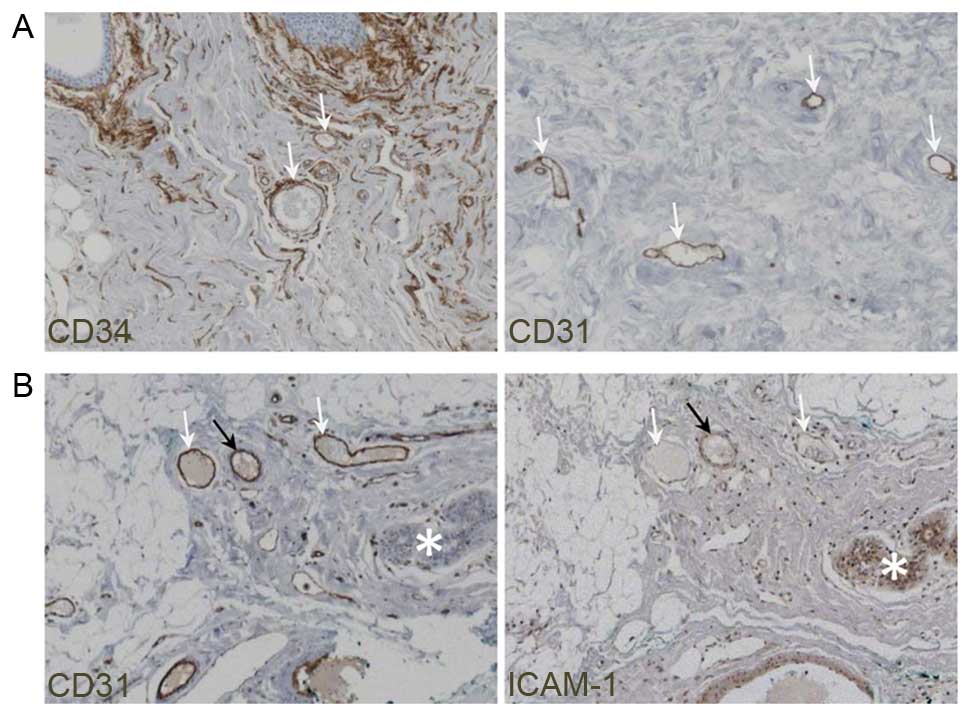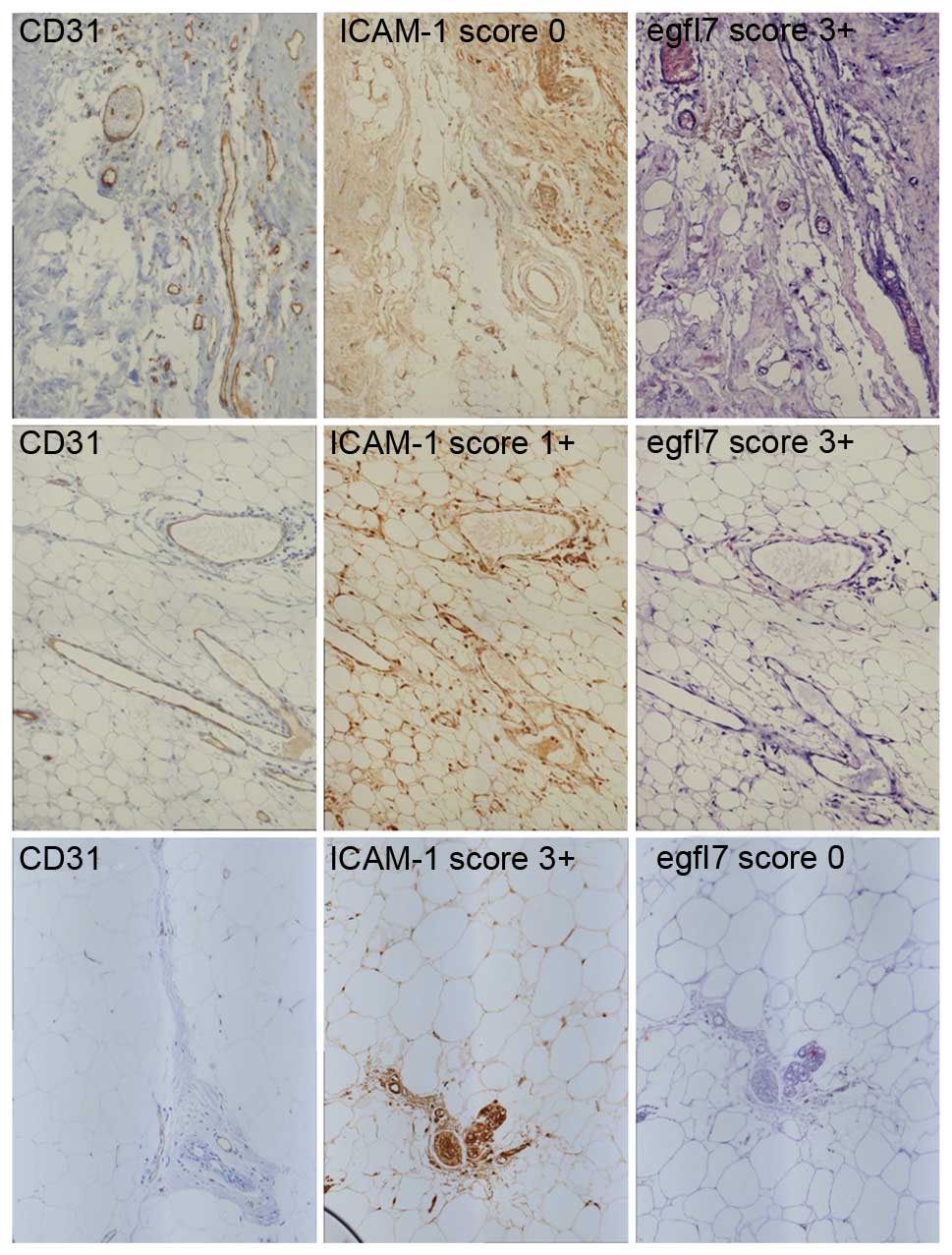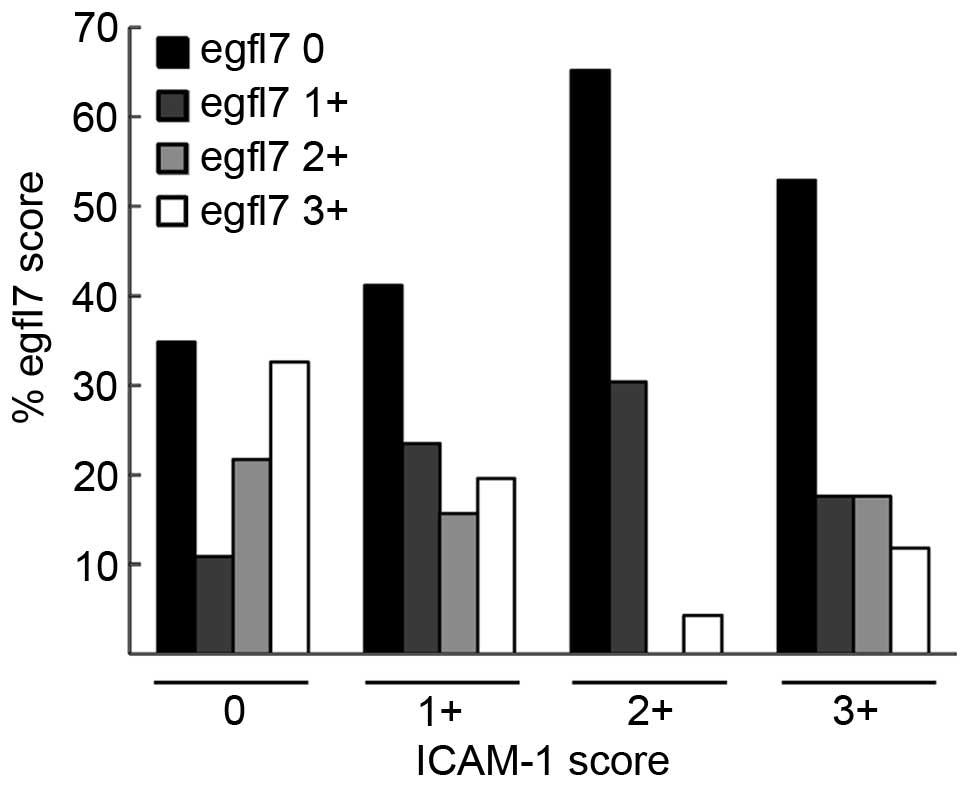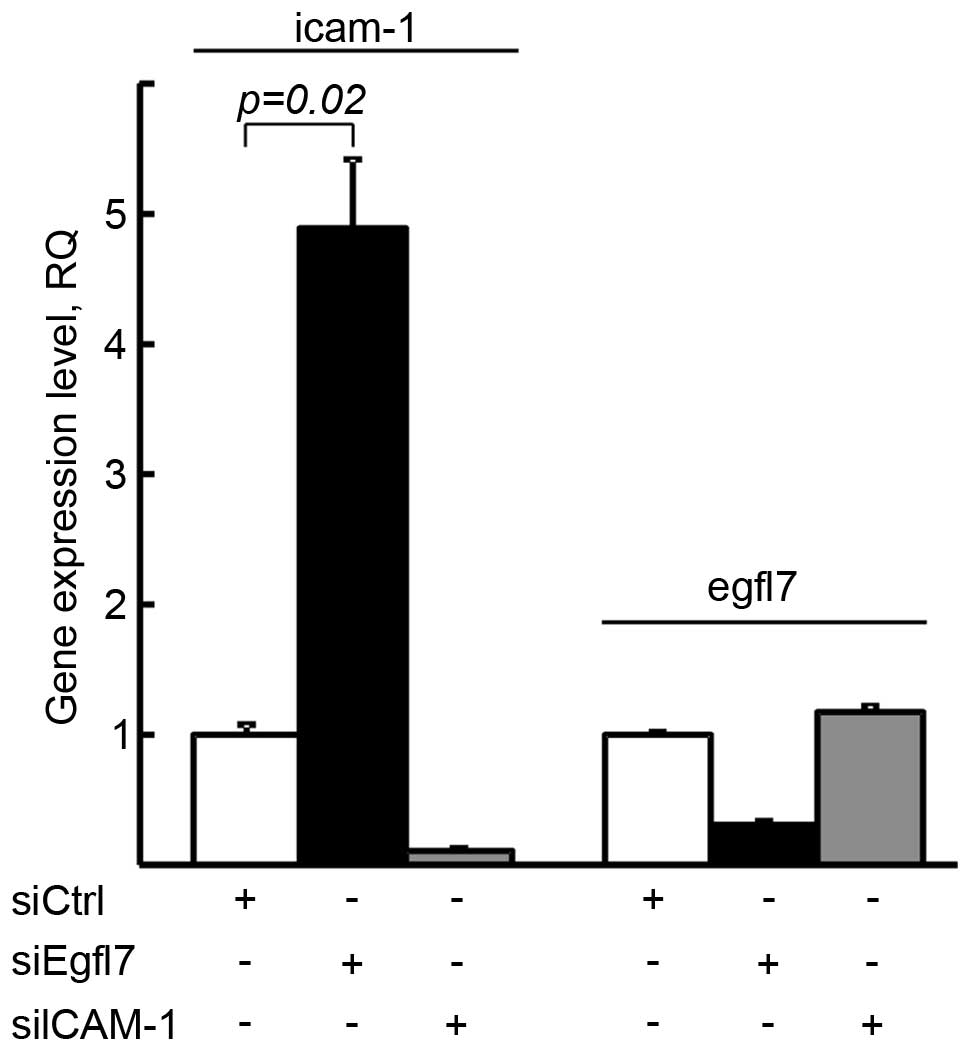|
1
|
Hanahan D and Weinberg RA: Hallmarks of
cancer: The next generation. Cell. 144:646–674. 2011. View Article : Google Scholar : PubMed/NCBI
|
|
2
|
Chen DS and Mellman I: Oncology meets
immunology: The cancer-immunity cycle. Immunity. 39:1–10. 2013.
View Article : Google Scholar : PubMed/NCBI
|
|
3
|
Topalian SL, Hodi FS, Brahmer JR,
Gettinger SN, Smith DC, McDermott DF, Powderly JD, Carvajal RD,
Sosman JA, Atkins MB, et al: Safety, activity, and immune
correlates of anti-PD-1 antibody in cancer. N Engl J Med.
366:2443–2454. 2012. View Article : Google Scholar : PubMed/NCBI
|
|
4
|
Brahmer J, Reckamp KL, Baas P, Crinò L,
Eberhardt WE, Poddubskaya E, Antonia S, Pluzanski A, Vokes EE,
Holgado E, et al: Nivolumab versus docetaxel in advanced
squamous-cell non-small-cell lung cancer. N Engl J Med.
373:123–135. 2015. View Article : Google Scholar : PubMed/NCBI
|
|
5
|
Muller WA: Mechanisms of transendothelial
migration of leukocytes. Circ Res. 105:223–230. 2009. View Article : Google Scholar : PubMed/NCBI
|
|
6
|
Herberman RB, Nunn ME, Holden HT and
Lavrin DH: Natural cytotoxic reactivity of mouse lymphoid cells
against syngeneic and allogeneic tumors. II. Characterization of
effector cells. Int J Cancer. 16:230–239. 1975. View Article : Google Scholar : PubMed/NCBI
|
|
7
|
Shrikant P and Mescher MF: Control of
syngeneic tumor growth by activation of CD8+ T cells: Efficacy is
limited by migration away from the site and induction of
nonresponsiveness. J Immunol. 162:2858–2866. 1999.PubMed/NCBI
|
|
8
|
Soncin F, Mattot V, Lionneton F, Spruyt N,
Lepretre F, Begue A and Stehelin D: VE-statin, an endothelial
repressor of smooth muscle cell migration. Embo J. 22:5700–5711.
2003. View Article : Google Scholar : PubMed/NCBI
|
|
9
|
Parker LH, Schmidt M, Jin SW, Gray AM,
Beis D, Pham T, Frantz G, Palmieri S, Hillan K, Stainier DY, et al:
The endothelial-cell-derived secreted factor Egfl7 regulates
vascular tube formation. Nature. 428:754–758. 2004. View Article : Google Scholar : PubMed/NCBI
|
|
10
|
Fitch MJ, Campagnolo L, Kuhnert F and
Stuhlmann H: Egfl7, a novel epidermal growth factor-domain gene
expressed in endothelial cells. Dev Dyn. 230:316–324. 2004.
View Article : Google Scholar : PubMed/NCBI
|
|
11
|
Diaz R, Silva J, Garcia JM, Lorenzo Y,
García V, Peña C, Rodríguez R, Muñoz C, García F, Bonilla F and
Domínguez G: Deregulated expression of miR-106a predicts survival
in human colon cancer patients. Genes Chromosomes Cancer.
47:794–802. 2008. View Article : Google Scholar : PubMed/NCBI
|
|
12
|
Wu F, Yang LY, Li YF, Ou DP, Chen DP and
Fan C: Novel role for epidermal growth factor-like domain 7 in
metastasis of human hepatocellular carcinoma. Hepatology.
50:1839–1850. 2009. View Article : Google Scholar : PubMed/NCBI
|
|
13
|
Huang CH, Li XJ, Zhou YZ, Luo Y, Li C and
Yuan XR: Expression and clinical significance of Egfl7 in malignant
glioma. J Cancer Res Clin Oncol. 136:1737–1743. 2010. View Article : Google Scholar : PubMed/NCBI
|
|
14
|
Zhou L, Li J, Zhao YP, Guo JC, Cui QC,
Zhou WX, Zhang TP, Wu WM, You L and Shu H: Prognostic significance
of epidermal growth factor-like domain 7 in pancreatic cancer.
Hepatobiliary Pancreat Dis. 13:523–528. 2014. View Article : Google Scholar
|
|
15
|
Delfortrie S, Pinte S, Mattot V, Samson C,
Villain G, Caetano B, Lauridant-Philippin G, Baranzelli MC,
Bonneterre J, Trottein F, et al: Egfl7 promotes tumor escape from
immunity by repressing endothelial cell activation. Cancer Res.
71:7176–7186. 2011. View Article : Google Scholar : PubMed/NCBI
|
|
16
|
Lelièvre E, Hinek A, Lupu F, Buquet C,
Soncin F and Mattot V: VE-statin/egfl7 regulates vascular
elastogenesis by interacting with lysyl oxidases. Embo J.
27:1658–1670. 2008.Can't. View Article : Google Scholar : PubMed/NCBI
|
|
17
|
Miettinen M: Immunohistochemistry of soft
tissue tumours - review with emphasis on 10 markers.
Histopathology. 64:101–118. 2014. View Article : Google Scholar : PubMed/NCBI
|
|
18
|
Penault-Llorca F and Arnould L: Adjuvant
breast cancer: Which clinical and pathological characteristics in
2007? Bull Cancer. 97:1421–1426. 2010.(In French). PubMed/NCBI
|
|
19
|
Fina L, Molgaard HV, Robertson D, Bradley
NJ, Monaghan P, Delia D, Sutherland DR, Baker MA and Greaves MF:
Expression of the CD34 gene in vascular endothelial cells. Blood.
75:2417–2426. 1990.PubMed/NCBI
|
|
20
|
Schröder C, Witzel I, Müller V, Krenkel S,
Wirtz RM, Jänicke F, Schumacher U and Milde-Langosch K: Prognostic
value of intercellular adhesion molecule (ICAM)-1 expression in
breast cancer. J Cancer Res Clin Oncol. 137:1193–1201. 2011.
View Article : Google Scholar : PubMed/NCBI
|
|
21
|
Fox SB, Turner GD, Leek RD, Whitehouse RM,
Gatter KC and Harris AL: The prognostic value of quantitative
angiogenesis in breast cancer and role of adhesion molecule
expression in tumor endothelium. Breast Cancer Res Treat.
36:219–226. 1995. View Article : Google Scholar : PubMed/NCBI
|
|
22
|
Bouma-ter Steege JC, Baeten CIM, Thijssen
VL, Satijn SA, Verhoeven IC, Hillen HF, Wagstaff J and Griffioen
AW: Angiogenic profile of breast carcinoma determines leukocyte
infiltration. Clin Cancer Res. 10:7171–7178. 2004. View Article : Google Scholar : PubMed/NCBI
|
|
23
|
Guo P, Huang J, Wang L, Jia D, Yang J,
Dillon DA, Zurakowski D, Mao H, Moses MA and Auguste DT: ICAM-1 as
a molecular target for triple negative breast cancer. Proc Natl
Acad Sci USA. 111:14710–14715. 2014. View Article : Google Scholar : PubMed/NCBI
|
|
24
|
Philippin-Lauridant G, Baranzelli M-C,
Samson C, Fournier C, Pinte S, Mattot V, Bonneterre J and Soncin F:
Expression of Egfl7 correlates with low-grade invasive lesions in
human breast cancer. Int J Oncol. 42:1367–1375. 2013.PubMed/NCBI
|
|
25
|
Rao VN, Huebner K, Isobe M, Ar RA, Croce
CM and Reddy ES: elk, tissue-specific ets-related genes on
chromosomes X and 14 near translocation breakpoints. Science.
244:66–70. 1989. View Article : Google Scholar : PubMed/NCBI
|
|
26
|
Kuldo JM, Westra J, Asgeirsdóttir SA, Kok
RJ, Oosterhuis K, Rots MG, Schouten JP, Limburg PC and Molema G:
Differential effects of NF-{kappa}B and p38 MAPK inhibitors and
combinations thereof on TNF-{alpha}- and IL-1{beta}-induced
proinflammatory status of endothelial cells in vitro. Am J Physiol
Cell Physiol. 289:C1229–C1239. 2005. View Article : Google Scholar : PubMed/NCBI
|
|
27
|
Maeng YS, Min JK, Kim JH, Yamagishi A,
Mochizuki N, Kwon JY, Park YW, Kim YM and Kwon YG: ERK is an
anti-inflammatory signal that suppresses expression of
NF-kappaB-dependent inflammatory genes by inhibiting IKK activity
in endothelial cells. Cell Signal. 18:994–1005. 2006. View Article : Google Scholar : PubMed/NCBI
|
|
28
|
Zhou Z, Connell MC and MacEwan DJ:
TNFR1-induced NF-kappaB, but not ERK, p38MAPK or JNK activation,
mediates TNF-induced ICAM-1 and VCAM-1 expression on endothelial
cells. Cell Signal. 19:1238–1248. 2007. View Article : Google Scholar : PubMed/NCBI
|
|
29
|
Badiwala MV, Guha D, Tumiati L, Joseph J,
Ghashghai A, Ross HJ, Delgado DH and Rao V: Epidermal growth
factor-like domain 7 is a novel inhibitor of neutrophil adhesion to
coronary artery endothelial cells injured by calcineurin
inhibition. Circulation. 124(11 Suppl): S197–S203. 2011. View Article : Google Scholar : PubMed/NCBI
|
|
30
|
Johnson L, Huseni M, Smyczek T, Lima A,
Yeung S, Cheng JH, Molina R, Kan D, De Mazière A, Klumperman J, et
al: Anti-Egfl7 antibodies enhance stress-induced endothelial cell
death and anti-VEGF efficacy. J Clin Invest. 123:3997–4009. 2013.
View Article : Google Scholar : PubMed/NCBI
|


















